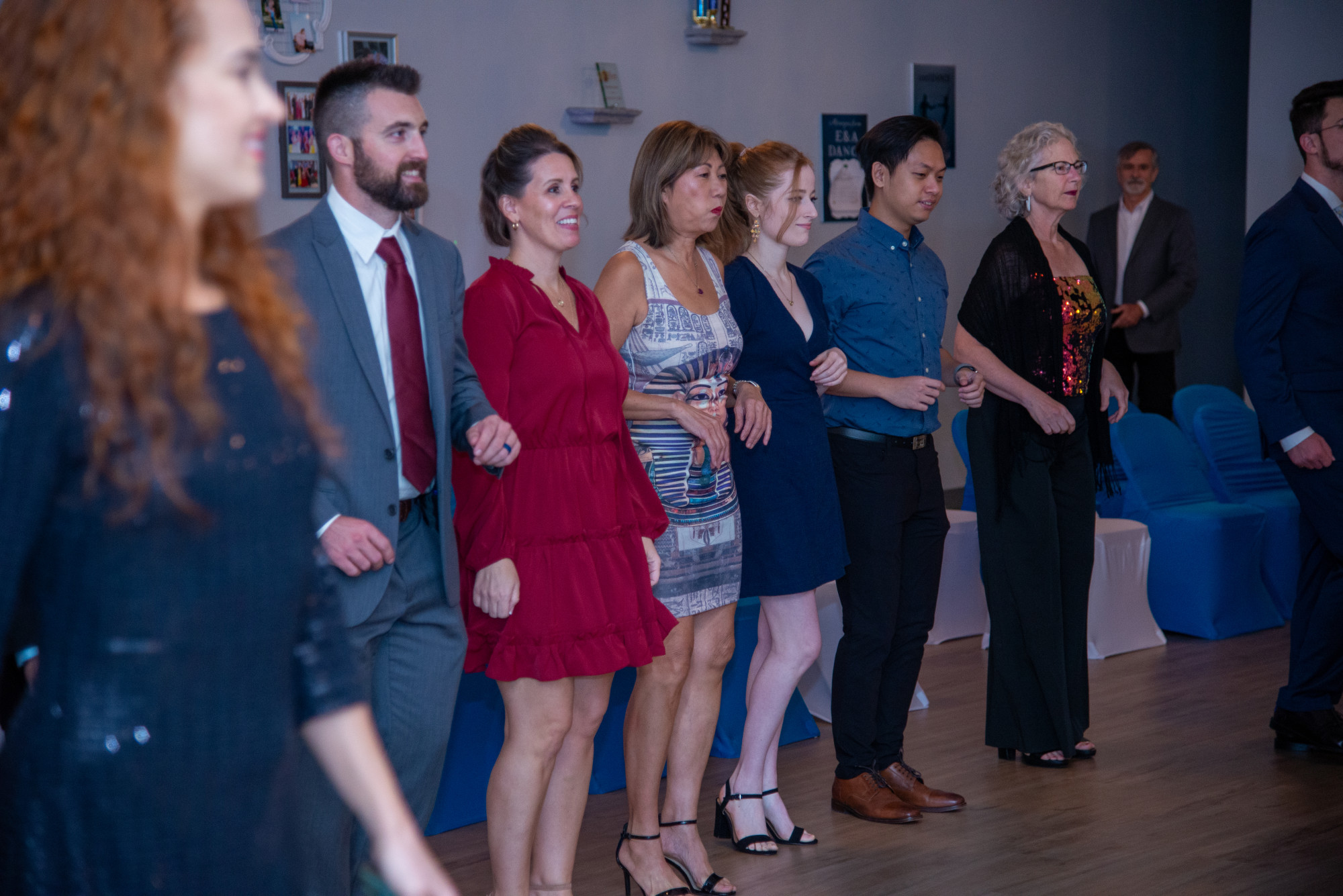Line Dancing Dance Lessons Near Orange County, Florida
Looking to get private dance lessons near Orange County, Florida? We've got you covered! We are conveniently located in Ocoee and ready to help you on your dance journey!

Line Dancing
Line dancing is a choreographed dance form where individuals dance in lines or rows, without the need for a partner. Participants perform a sequence of steps in unison, following a predetermined pattern set to a specific piece of music. Line dancing is characterized by its simplicity, repetitive patterns, and social aspect, making it accessible to dancers of all ages and skill levels.
Commonly danced to country, pop, or Latin music, line dancing offers a wide variety of styles and rhythms, including country line dances like the "Electric Slide" and "Boot Scootin' Boogie," as well as popular line dances such as the "Cha-Cha Slide" and "Cupid Shuffle."
Line dancing can be enjoyed in various settings, including dance halls, clubs, social gatherings, and even fitness classes. It promotes physical activity, coordination, and social interaction, making it a fun and engaging way to stay active while connecting with others.
One of the appealing aspects of line dancing is its inclusivity, as dancers do not need a partner to participate. Each dance typically consists of a series of steps repeated throughout the song, allowing dancers to join in at any point and follow along easily. Line dancing fosters a sense of community and camaraderie among participants, creating a welcoming environment where everyone can enjoy dancing together.